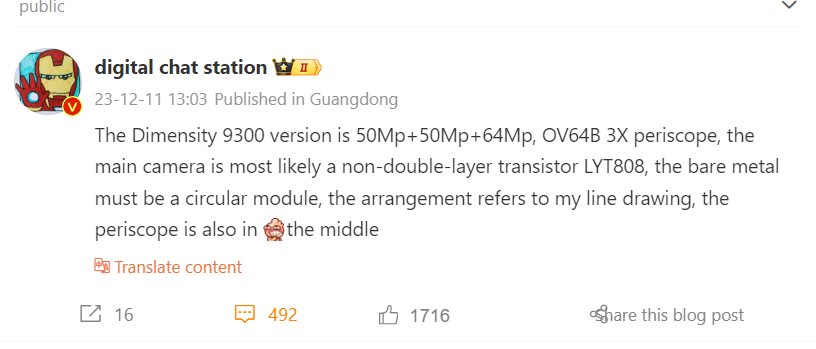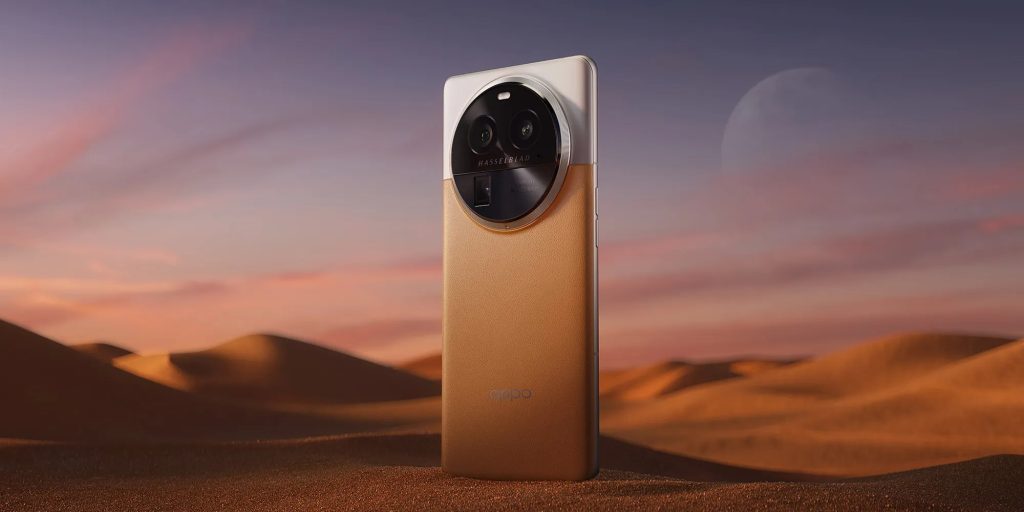Oppo Find X7 series is all set to launch very soon with some exciting features. There’s already curiosity among Oppo fans about the device, and some features have already been part of the latest leaks and revealed by public certifications. In addition, the upcoming Oppo Find X7 smartphone is leaked again, and this time its camera specifications are revealed along with slight information about its SoC. The smartphone that is set to feature 100W charging will feature Dimensity 9300.

As per the Digital Chat Station, the smartphone appears to bundle a triple-rear camera module. It will consist of a 50MP Sony LYT-808 Primary camera, a 50MP ultrawide sensor, and 64MP OmniVision’s OV64B periscope telephoto lens. Furthermore, it will feature the recently announced Dimensity 9300 SoC, which is built on TSMC’s 4nm process and includes one Cortex-X4 core at 3.25GHz, three Cortex-X4 cores at 2.85GHz, and four Cortex-A720 cores at 2.0GHz.

Apart from the new information, the new series will consist of two new smartphones, which are the Oppo Find X7 and Oppo Find X7 Pro. Both are expected to feature 100W fast charging and are expected to launch alongside the OnePus 12 globally. The Find X7 Pro is expected to bundle the Snapdragon 8 Gen 3 SoC. It could come with a 6.82-inch AMOLED display with 2K resolution and a 120Hz refresh rate. Further, the rumors claim it will feature Sony’s 1-inch LYT900 sensor while featuring a 2x periscope sensor offering 2.7x zoom with the Sony IM890 and 6x zoom with the Sony IMX858 sensor.
Oppo Find X7 and Find X7 Pro Details
On the flip side, the Oppo Find X7 will come with a Dimensity 9300 SoC, as per AnTuTu and Geekbench benchmarks. It will have a 120Hz refresh rate, 16GB of LPDDR5x RAM, and up to 1TB of UFS 4.0 storage. Both smartphones will run Android 14.
Details about its design are also public, as live images of both the front and rear panels have emerged. It is also said to arrive with support for satellite communication.
However, other details about the device are not yet available.
Related:
- Oppo Find X7, Find X7 Pro spotted with 100W charger in 3C certification’s database
- OPPO Find X7 Pro Surfaces In Leaked Images Once Again Revealing More Details
- Alleged Oppo Find X7 Pro real-life image leaked, reveals an octagonal camera module, quad camera setup
- Honor Magic 6 & Oppo Find X7 Series to feature satellite communication, low power calling, and more: Tipster







